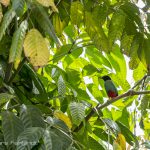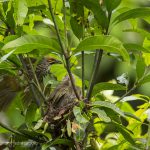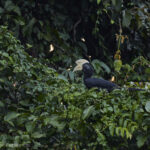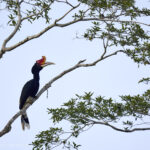Stork-billed kingfisher – Pelargopsis capensis (Linnaeus, 1766) – P. c. innominata (van Oort, 1910) – of Borneo (200m ASL)
Pelargopsis capensis is a large tree kingfisher of the family Alcedinidae that is widely but patchily distributed from the Indian subcontinent through mainland Southeast Asia to the Greater Sundas and parts of the Philippines, where it is mainly resident in riparian forest mangroves and other wooded wetlands. Adults are distinctive with an olive brown head blue wings and tail buff underparts and a very large red bill and legs, and the sexes are alike in appearance. The species typically hunts from a perch and plunges for fish while also taking crabs and frogs, and it excavates nest burrows in earthen banks with clutches of two to five white eggs. The generic name Pelargopsis combines the Greek pelargos meaning stork and opsis meaning appearance, alluding to the stork like bill, and the specific epithet capensis is Latin for of the Cape of Good Hope. Linnaeus’s original type locality was given as the Cape of Good Hope in error, and it has been corrected to Java; the species is not African. The genus Pelargopsis was introduced by Gloger in 1841 and today comprises three species, and P. capensis is assessed as Least Concern on the IUCN Red List.





